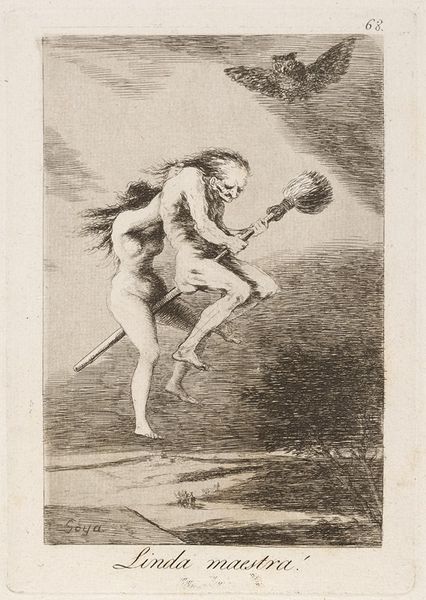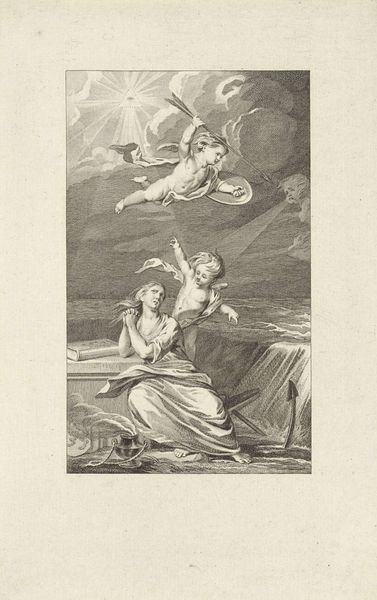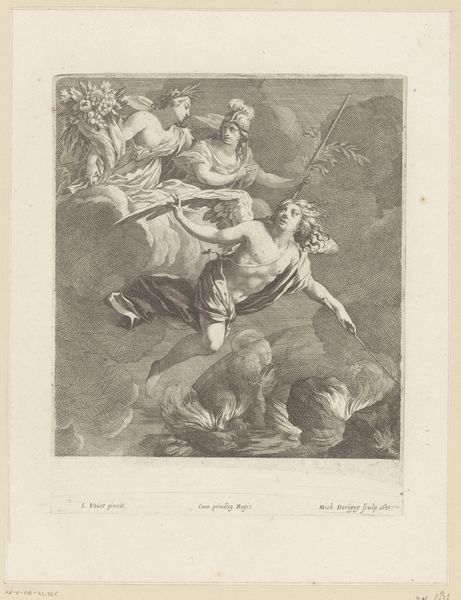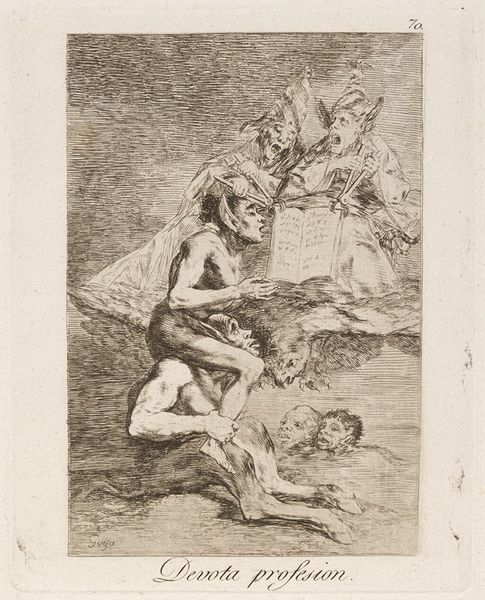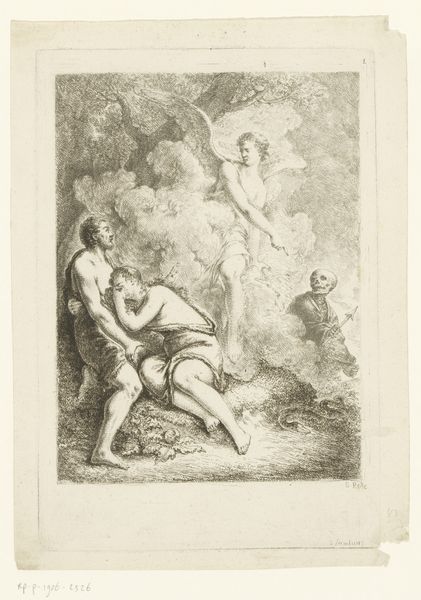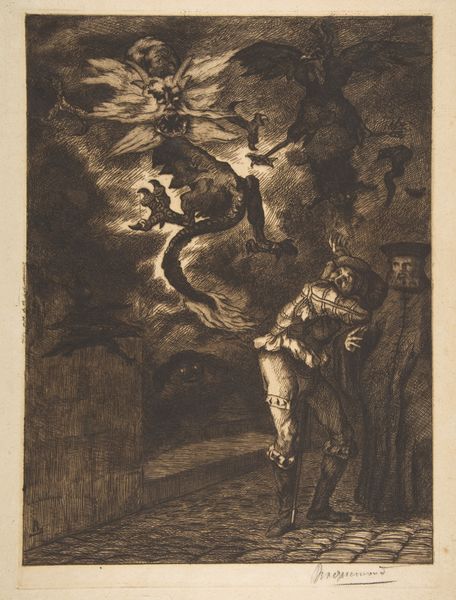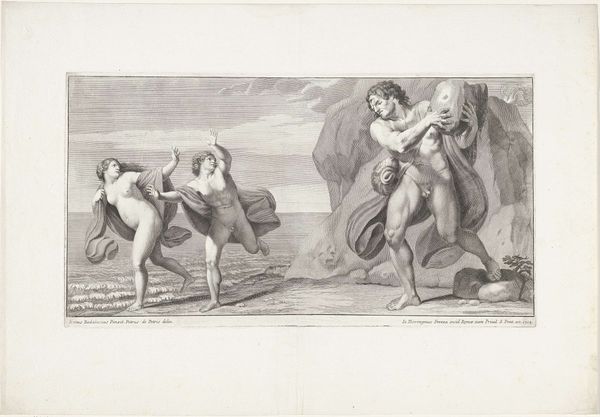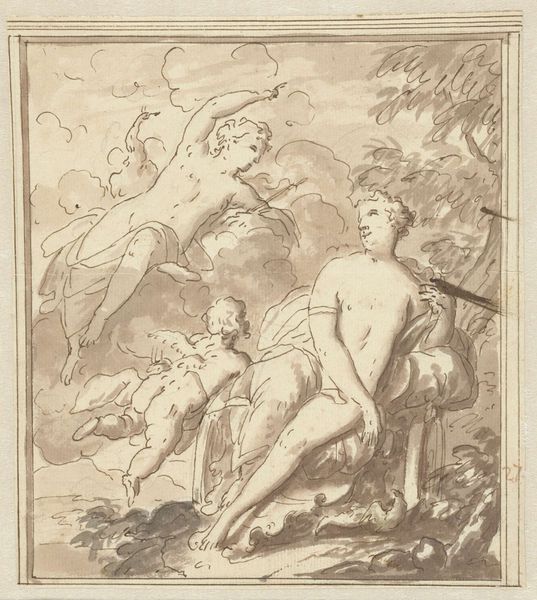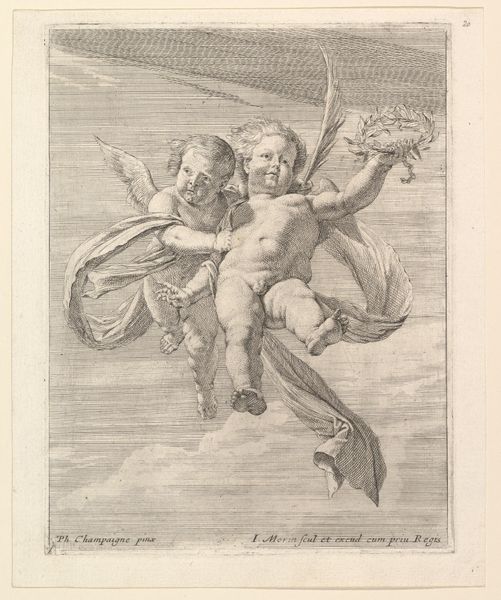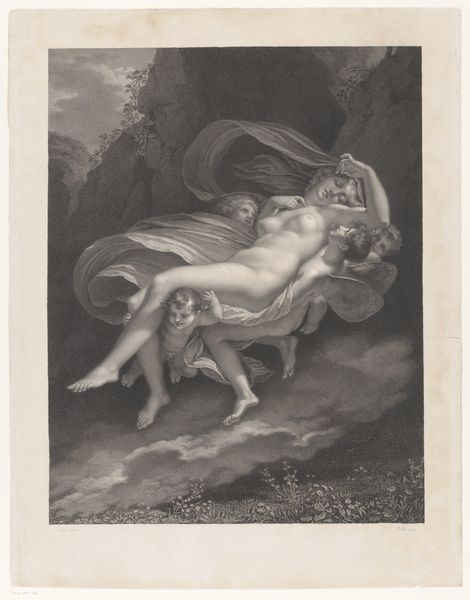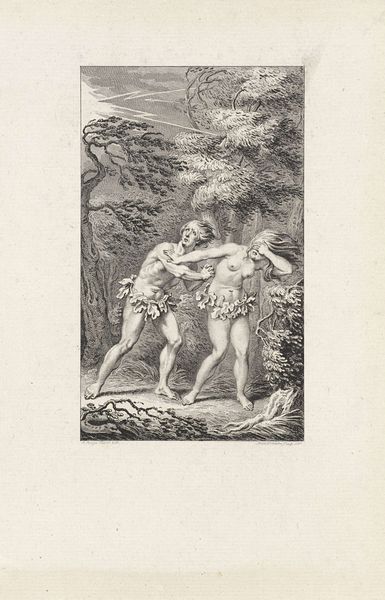
print, etching, engraving
# print
#
etching
#
caricature
#
old engraving style
#
personal sketchbook
#
romanticism
#
history-painting
#
engraving
Copyright: Public Domain: Artvee
This print, made by Francisco Goya, employs etching and aquatint, processes integral to printmaking since the Renaissance. The process begins with a metal plate, coated with an acid-resistant ground. Goya scratched an image into this coating, exposing the metal beneath. The plate was then immersed in acid, which bit into the exposed lines, creating grooves. For aquatint, powdered resin is applied to the plate and heated, creating a porous ground. Acid then etches around these particles, producing tonal areas. Ink is then forced into the etched areas, the surface wiped clean, and the image transferred to paper under great pressure. The lines and textures achieved through this laborious process contribute to the print’s eerie atmosphere. The contrasts create a sense of depth and drama, enhancing the grotesque imagery of figures in flight, evoking the labor involved in artistic creation. The print is not just an image, it is a record of physical actions, chemical reactions, and mechanical force. Considering the intricate dance of materials, labor, and social commentary challenges the traditional hierarchy that places painting and sculpture above the so-called "minor arts."
Comments
No comments
Be the first to comment and join the conversation on the ultimate creative platform.
